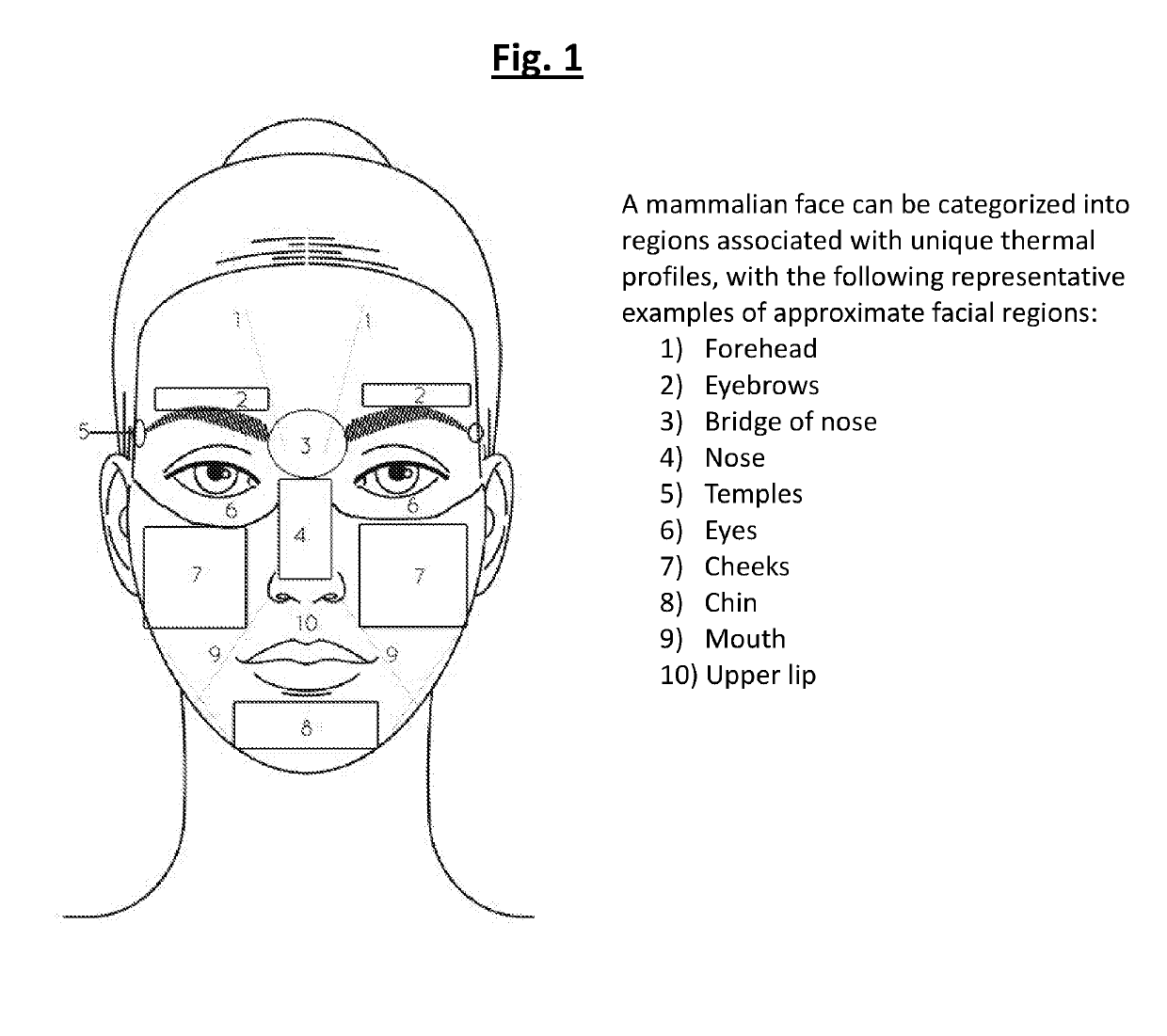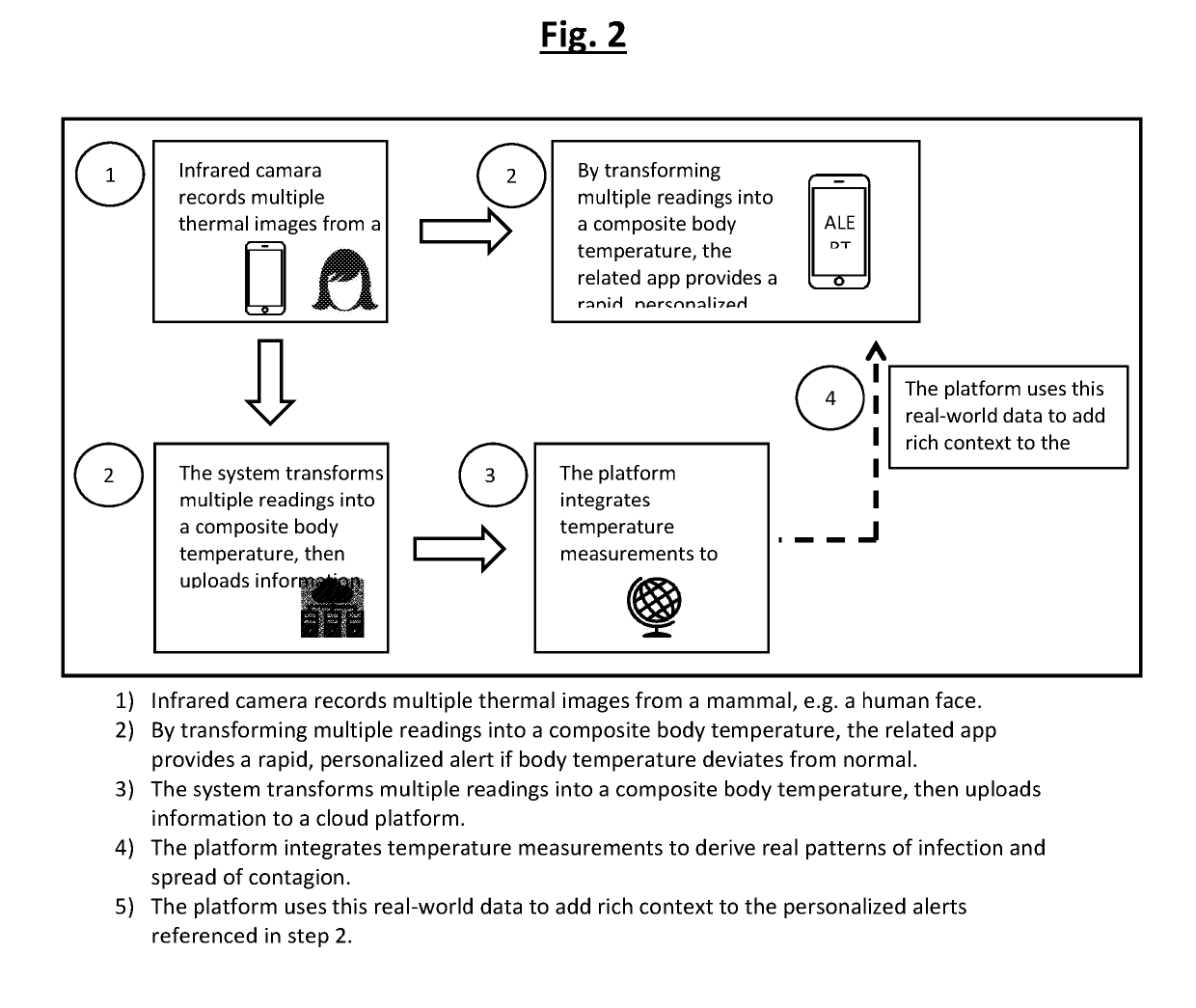Detection of flu using thermal imaging
a technology of thermal imaging and flu, applied in the field of flu detection using thermal imaging, can solve the problems of limited utility toward identifying the specific timeline of fever onset, the requirement of (1) a standalone measurement device, and the connection of it to a smartphone, so as to accurately track and predict migration patterns, and improve the clinical relevance of deep learning exercis
- Summary
- Abstract
- Description
- Claims
- Application Information
AI Technical Summary
Benefits of technology
Problems solved by technology
Method used
Image
Examples
Embodiment Construction
[0020]Example embodiments of the present disclosure will be apparent to those of ordinary skill in the art from a review of the following detailed descriptions in conjunction with the drawings.
[0021]Example embodiments of the present disclosure are not limited to any particular operating system, electronic device architecture, server architecture or computer programming language.
Regions of a Mammalian Face
[0022]By reference to FIG. 1, a mammalian face can be categorized into regions associated with unique thermal profiles, with the following representative examples of approximate facial regions:[0023]1) Forehead[0024]2) Eyebrows[0025]3) Bridge of nose[0026]4) Nose[0027]5) Temples[0028]6) Eyes[0029]7) Cheeks[0030]8) Chin[0031]9) Mouth[0032]10) Upper lip,
[0033]Where the numbered facial regions above correspond to the numbered areas in FIG. 1.
Schematic of Invention Workflow
[0034]By reference to FIG. 2, a graphical schematic is provided by which the bidirectional flow of data occurs. Th...
PUM
 Login to View More
Login to View More Abstract
Description
Claims
Application Information
 Login to View More
Login to View More - R&D
- Intellectual Property
- Life Sciences
- Materials
- Tech Scout
- Unparalleled Data Quality
- Higher Quality Content
- 60% Fewer Hallucinations
Browse by: Latest US Patents, China's latest patents, Technical Efficacy Thesaurus, Application Domain, Technology Topic, Popular Technical Reports.
© 2025 PatSnap. All rights reserved.Legal|Privacy policy|Modern Slavery Act Transparency Statement|Sitemap|About US| Contact US: help@patsnap.com


